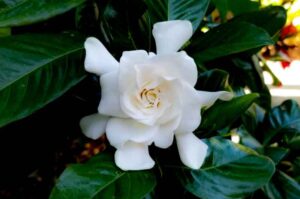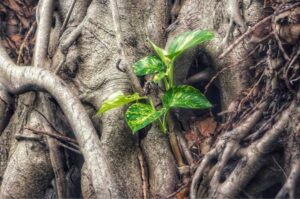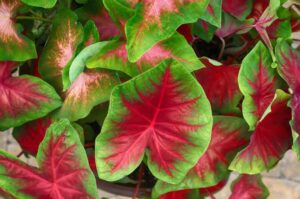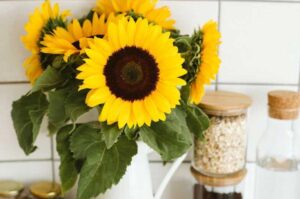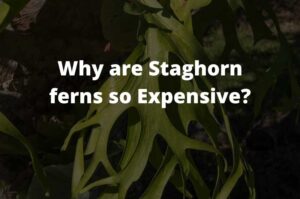Why is My Hoya Dropping Leaves?
Hoya plants are a pure joy to grow as a houseplant due to their beautiful, waxy flowers and lush green leaves. Their flowers have lovely inflorescence and aroma.
However, Hoya plants have several leaves that can turn yellow or drop off. When this happens, it may cause the plant to look unattractive or even dead.
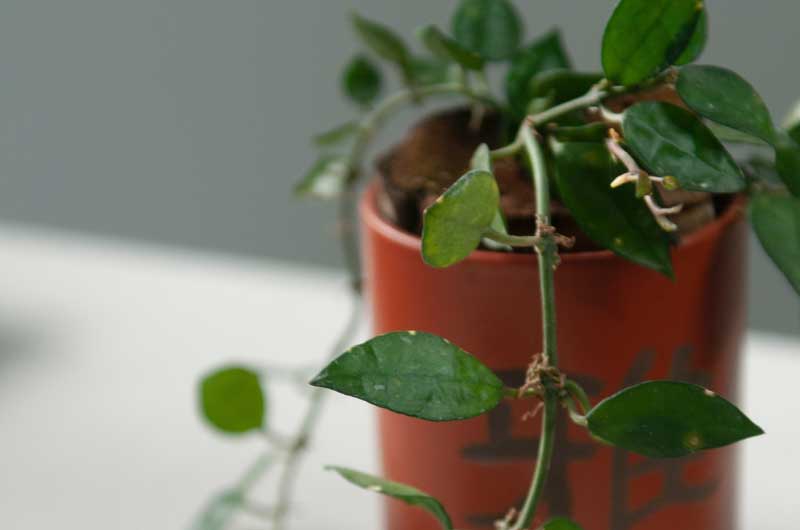
Most homeowners grow these plants because they are low maintenance and beautiful. But it becomes a cause of concern for them when these plants start shedding their new leaves.
The most common causes for which your Hoya plant is dropping its leaves are improper watering and temperature fluctuation. Apart from these some other factors like diseases, root rot, pest infestation, improper drainage, excess light, low humidity, etc., also play a major role in the leaf dropping of Hoya plants
Let’s discuss the above factors in detail for which your Hoya plant is dropping its leaves.
Causes of your Hoya dropping its leaves
Hoya plants are easy to grow and thrive in most environments. However, some factors can impact their growth and development and cause them to drop off their leaves.
Here is a detailed description of some common causes of Hoya leaves dropping and solutions to prevent the leaf drop:
Too much light
You need to know how much light is best for your Hoya because the amount of light a plant naturally receives can affect the color, shape, and size of its leaves. Too much or too little natural light can cause your plant to become stressed and lead to leaf drops.
Hoyas crave bright indirect sunlight, but if left in direct sunlight for an extended period, your Hoya will eventually begin dropping leaves. If this happens, you must move it into an area that receives less light immediately so it doesn’t die from exhaustion.
Solutions:
- Hoya plants need around six hours of sunlight per day with minimal shade. If you notice your hoya plant has lost its leaves because it was exposed to too much light for too long a period, move it somewhere else.
- But ensure it receives more sunlight but not so much that it burns the plant while it’s still young and growing.
- Windows facing to the east or light from the western or south-facing window is the best place to place your Hoyas.
Not enough water
The soil is the first to look at when your Hoya plants drop leaves. Are you watering them enough? If the answer is yes, you may have a problem with over-watering or under-watering.
You’ll be surprised to know that Hoya plants like bottom watering. Also, these plants prefer to dry between two consecutive watering sessions.
If your plant is healthy and growing well, but it’s still dropping leaves, it could be that you’re watering too much or not enough.
Here’s a trick to check if you have underwatered or overwatered: If you notice the falling leaves to be dry and crispy, you probably have underwatered your plant. But if the leaves are yellow or mushy, it indicates over-watering.
Solutions:
To test this, check the soil every week to know if it needs more water or less. You can also use a moisture meter to take readings directly from inside the soil, so there won’t be any guesswork involved in determining how much moisture there is!
Improper heat
Another common reason for the leaf shedding of your plant is improper heat indoors during the winter. The plants don’t get proper warmth as the heating systems are turned off when people leave for work each day or even just leave windows open.
They eventually start shedding their leaves in response to uneven or improper heat they get during winters.
Inappropriate temperatures
Hoya plants are tropical plants requiring a high-humidity environment with temperatures between 70 and 85 degrees Fahrenheit. If the temperature in your home rises above this range, it can cause the leaves of your Hoya to drop.
It’s essential to note that cold temperatures also have the same effect on hoyas. While they can tolerate temperatures below 40 degrees Fahrenheit (4 degrees Celsius), they will not bloom as well as they would under normal conditions.
Hoyas don’t like extremely cold weather and respond by dropping their leaves in such extremities.
Thus we can conclude that too high or too low temperatures can cause the leaves on your hoya plant to drop.
Solutions:
The plant may recover from these symptoms if you move it to a cooler location or mist it with water so its humidity level stays high enough for optimal growth.
Repotting shock
Hoya plants are sensitive to repoting and don’t mind being outbound, so it’s a bad idea to repot if not necessarily required. Instead, you can change their substrate every two years.
Solutions:
- If you plan to repot them, the best time is spring when the plant is actively growing.
- To avoid shock, ensure that you give the plant enough time to adjust to its new container before watering it heavily.
- Since they like to remain dry, unlike other plants, use terracotta pots as they are porous and can remove excess water.
Bad quality soil mix
Using a pot that’s too small for your plant and a potting mix that’s too wet or dry can cause leaf drops in Hoya plants. The ideal potting mix includes ⅓ perlite, ⅓ orchid mix, and ⅓ peat. It is a fairly aerated mixture and won’t let your plant stand in water.
If there aren’t any dead leaves on your plant due to overwatering, inspect how much water there is in the soil mix before deciding whether or not it needs more water.
Solutions:
The soil should be well-draining, aerated, well-nourished, and adequately watered.
Not enough humidity
If your Hoya plants drop leaves, you may not have enough humidity. High humidity in your home can be challenging if you don’t live in a tropical rainforest. Hoya is one of those plants that need plenty of moisture.
But when winter comes around and the houses dry up, it’s hard for you to keep up with watering.
Dampness is another reason why humidity levels may be low, especially during winter. It’s because there isn’t much sunlight entering your house from outside through the windows.
If you have been watering your plants less frequently than usual, then this could also be causing leaf drops.
Solutions:
- To remedy this problem, use a humidifier or a misting bottle to give your plant some extra love.
- You can also try keeping the soil slightly moist instead of completely dry throughout the day.
- And if all else fails: get yourself an adjustable humidity tray! It’s not just for orchids anymore!
Pest infestation
Another cause of leaves dropping on Hoya plants is the red spider mite, which can attack any plant, but is especially prevalent in indoor horticulture.
Red Spider Mites are small creatures that look like red spiders, and they cause anemia in many plants by feeding off their leaves. They can be found on the undersides of leaves, but you will often see them congregating in large numbers under the leaves or leaf veins.
Other pests that attack Hoyas include aphids, scales, mealy bugs, fungus gnats, thrips, etc. These pests love sucking the juice of leaves and stems, resulting in the shedding of leaves.
Also, if you leave the pest infestation unattended, it can even kill your Hoya.
Solution:
Insecticidal soap or spraying your plant with neem oil can help eliminate the bugs.
Final Thoughts
If your Hoya plant is dropping leaves, it may have problems because of its environment or a deficiency in nutrients or other chemicals. It’s vital to know what’s causing the leaf drop so you can fix it correctly.
If the old leaves at plants’ bottom fall naturally, you need not worry as it’s a part of their life cycle. But when random and newer leaves become yellow and shed off, it is a sign of concern. So, before addressing the problem of leaves falling, differentiate between what leaves are falling and take action accordingly.
You can do several things to prevent your Hoya from losing its leaves and keep it healthy. For example, you should promptly check your Hoya plants as soon as you notice they are dropping leaves and investigate if they are suffering from one of the causes mentioned above.
Also, feed your Hoyas with diluted fertilizer every few weeks during the spring/summer. Apply them directly onto the soil surface around the base of the plant. Water the plants lightly afterward, and use distilled water if possible!!
Moreover, proper watering is essential for Hoyas to remain healthy. Keep your plant evenly moist at all times but don’t overwater or underwater!
You should water every 2-3 days when the soil is dry below 1 inch deep (closest to the pot). If you forget, don’t worry, it will still live on for a bit, even if left unwatered for a week or two (but not too long!)
Make sure that once plants show signs of wilting and drooping leaves, they get watered right away before they die off completely!
That was all about taking care of your Hoya plants and preventing their leaves from falling off. If your plant shows any unusual signs, timely intervention can help them from dying.

